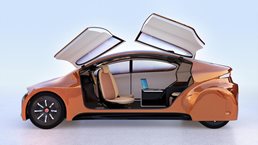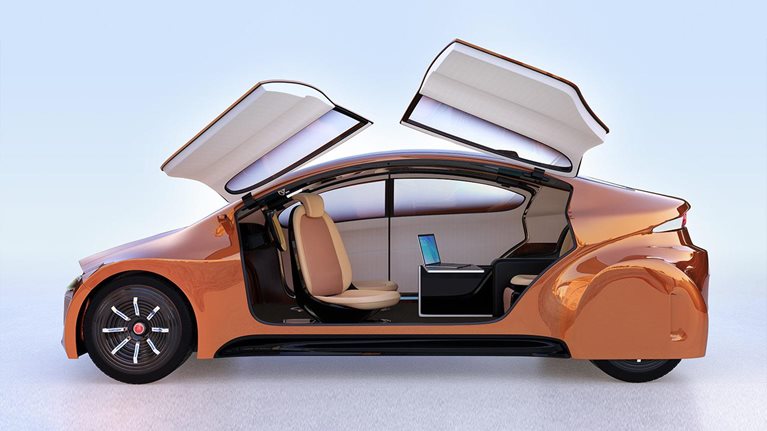Four ACES will beat most other hands at today’s automotive gaming table. Similarly, we believe that the four ACES trends—autonomous driving, connectivity, electrification, and smart mobility—will transform the way the industry and consumers view mobility.
Stay current on your favorite topics
Because the ACES trends are emerging simultaneously, understanding the impact that all four will have on the market requires a holistic, interconnected perspective to help automakers, suppliers, and new mobility-market entrants create offerings aligned with the customers’ needs. Our yearly ACES survey among 3,000 people in China, Germany, and the United States, conducted since 2014, provides this kind of integrated perspective.
Pacesetters: Young, urban, tech smart, and adept at mobility
Our research suggests that one global group of customers—young, urban, and technology-oriented mobility users—increasingly sets the pace for the core automotive technologies that define ACES. Some people in this group shun car ownership in favor of more convenient, less expensive mobility options.
Members of this ACES sweet spot, though present throughout the world, appear to be more common in China—perhaps as a result of the population’s recognized openness to technological innovation. And given this ready-made demand, the country’s market could see the first large-scale adoption of these technologies. Take electrification: since 2016, China has boasted the largest electric-vehicle (EV) market in the world. In addition, this group of customers is significantly more open to and curious about the ACES technologies, valuing them above traditional core automotive attributes, like acceleration and horsepower.
The ACES trends pose a challenge to traditional OEMs, which seek ways to move buyers of traditional cars toward these innovations. The early adopters in our survey can give carmakers a place to start.

ACES 2019 survey: Can established auto manufacturers meet customer expectations for ACES?
Unpacking ACES elements
Our survey, designed to provide a granular understanding of ACES consumers, breaks down the elements of each trend as reflected in the attitudes and aspirations of tomorrow’s car buyers.
Autonomous driving
Autonomous driving remains focused on certain customer segments (Exhibit 1). Overall, 46 percent of the respondents say they feel good about the idea of using autonomous vehicles (AVs). The strongest affirmations come from respondents who are below 50 years of age (50 percent), live in China (72 percent) or in big cities (58 percent), or own a vehicle from a premium OEM (52 percent).

Surprisingly, this finding has remained stable since 2017 despite the negative publicity generated by recent accidents involving autonomous test vehicles. In fact, more customers say that the accidents and how car manufacturers handled them have increased their trust in the technology. Much of this positive spin comes from Chinese customers.
Would you like to learn more about the McKinsey Center for Future Mobility?
Since last year, perceptions of the autonomous driving features and functionality from relatively new high-tech car manufacturers have improved markedly, catching up quickly with those of established brands. However, many more respondents still trust established OEMs when it comes to buying these technologies—64 percent versus 23 percent for newer manufacturers.
Connectivity

One remarkably consistent finding over the past three years: roughly 40 percent of the respondents are willing to change car brands for better connectivity features (Exhibit 2). This lack of brand loyalty among so many respondents seems stunning at first glance, but a closer examination reveals that China’s car buyers skew the results—nearly 70 percent say they would change brands for better connectivity. Only 19 percent of German respondents and 34 percent of US ones agree. Given the ongoing global rush toward ubiquitous connectivity, you would think this level of brand fickleness might have increased since the 2016 survey, but it has not—maybe because these features are increasingly seen as being a matter of course. Nonetheless, the message seems clear: consistently strong consumer demand continues to make connectivity features very important indeed. OEMs must therefore strive to offer the latest innovations in this area.
Our research also suggests that autonomous driving will open new opportunities for connectivity features: for instance, respondents expect that with autonomous driving, they would use the infotainment system (including movies and music) for roughly 20 percent of their travel time, an additional 8 percent for online shopping, and the rest talking to other people in the car, sleeping, or simply looking out of the window.
Electrification
While gasoline engines currently dominate the automotive powertrain mix, half of all respondents say they would consider an electric vehicle—a full hybrid (HEV), a plug-in hybrid (PHEV), or a battery-electric vehicle (BEV)—for their next car purchase (Exhibit 3).

Our survey reveals that the consumers’ knowledge and awareness of powertrains grow stronger as electrification itself becomes more dominant within a vehicle. For example, respondents know the least about mild hybrids, which provide the lowest electrification levels, and progressively more about HEVs, PHEVs, and BEVs, which include far more EV technology. Many younger and big-city respondents, asked which powertrain they would consider for their next car, expressed interest in electrification, with HEVs edging out other EV types.
As in previous years, the two biggest concerns about EVs are limited driving ranges and high purchase prices. The Germans are the most demanding respondents regarding range: around half of those surveyed seek 400 kilometers (249 miles) or more from both BEVs and PHEVs. The Chinese, on the other hand, showed the least concern about range. It seems likely that upcoming EV models will offer ranges closer to these targets, which should significantly boost market shares for such vehicles.

How the auto industry is preparing for the car of the future
Cost remains a significant problem: more than 60 percent of those surveyed say they would not pay a premium for an EV. In fact, over 30 percent go one step further and say that EVs should be cheaper than regular cars. Conversely, the most beneficial aspects of EV ownership include environmental friendliness and lower fuel costs.
Smart mobility
Platform-based mobility, virtually unknown a decade ago, continues to gain strength. In fact, among survey takers who do not own a car, 36 percent said car sharing was the primary reason. That is an astounding 18 percentage point increase over 2017 levels, with spikes among respondents under 50 years of age (43 percent), respondents living in large cities (44 percent), and Chinese respondents (48 percent).
Expect these percentages to grow in the future. Over 60 percent of the respondents under 30 would trade their cars for a robo-taxi service, and 27 percent say they would do so even if the total cost were equal to or higher than the cost of owning a car (Exhibit 4). In China, roughly 80 percent of the respondents expressed a willingness to trade in their cars, and 17 percent were open to paying a premium over their current vehicle-ownership costs. In Germany and the United States, nearly 60 percent of survey takers prefer to keep their cars, and far fewer (3 to 7 percent) would pay a premium for robo-taxi service.

Customers express the most interest in using robo-taxis for longer trips and for special situations, such as rides to the airport (50 and 55 percent, respectively). Surprisingly, they remain less interested in using robo-taxis for commuting or for daily errands (41 and 32 percent, respectively).
Our latest ACES survey reveals a growing perception among consumers that these new technologies are either on the horizon (autonomous driving, smart mobility) or already on their doorsteps (electrification, connectivity). The ACES trends continue to gain momentum and to become progressively more interconnected, thus increasing the need for an accurate reading on their ultimate market potential. Currently, we see big differences in consumer demand not just by age or by type of city but also by region (China). Coming shifts in consumer mobility behavior will influence all four ACES trends, so OEMs must adapt quickly to stay in the game.


